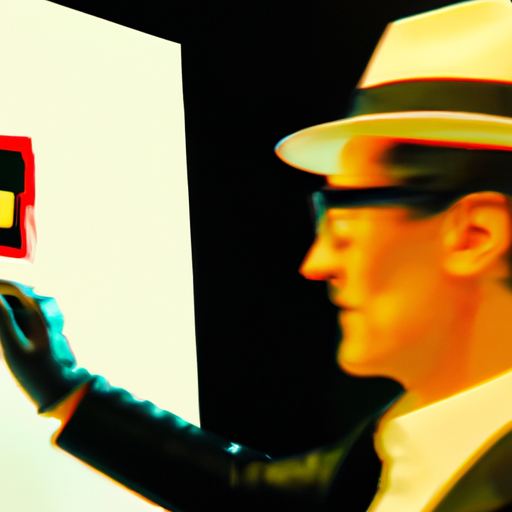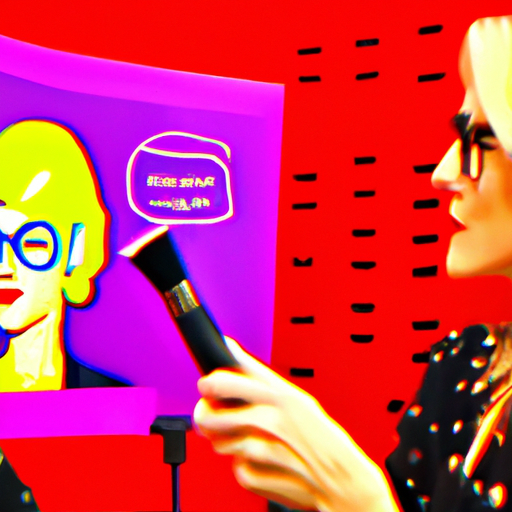
-
Table of Contents
- Designing Graphics for Virtual Reality Marketing
- The Importance of Graphics in Virtual Reality Marketing
- Case Studies: Successful VR Marketing Graphics
- 1. IKEA VR Experience
- 2. The North Face: VR Climbing Experience
- Best Practices for Designing VR Marketing Graphics
- 1. Optimize for Performance
- 2. Prioritize User Comfort
- 3. Maintain Brand Consistency
- Summary
Designing Graphics for Virtual Reality Marketing

Virtual reality (VR) has revolutionized the way businesses market their products and services. With the ability to create immersive and interactive experiences, VR has become a powerful tool for engaging consumers and driving sales. However, designing graphics for virtual reality marketing requires a unique approach to ensure optimal user experience and maximum impact. In this article, we will explore the key considerations and best practices for designing graphics for virtual reality marketing.
The Importance of Graphics in Virtual Reality Marketing
Graphics play a crucial role in virtual reality marketing as they are responsible for creating the visual environment that users interact with. High-quality and visually appealing graphics can enhance the overall experience, captivate the audience, and leave a lasting impression. On the other hand, poorly designed graphics can lead to disorientation, discomfort, and a negative perception of the brand.
When designing graphics for virtual reality marketing, it is essential to consider the following factors:
- Resolution and Clarity: VR headsets have limited resolution capabilities, so it is crucial to optimize graphics for clarity and sharpness. High-resolution textures and detailed models can significantly enhance the visual experience.
- Color and Contrast: Colors should be carefully chosen to ensure they are vibrant and easily distinguishable in the virtual environment. Proper contrast between different elements can improve visibility and reduce eye strain.
- Performance Optimization: VR experiences require real-time rendering, which can be resource-intensive. Graphics should be optimized to ensure smooth performance and minimize latency.
- Consistency: Consistent design elements, such as typography, icons, and branding, help create a cohesive and recognizable brand identity within the virtual environment.
Case Studies: Successful VR Marketing Graphics
Several companies have successfully utilized virtual reality marketing to engage their target audience and drive sales. Let’s take a look at two case studies that highlight the importance of well-designed graphics in VR marketing:
1. IKEA VR Experience
IKEA, the Swedish furniture retailer, created a virtual reality experience that allows customers to explore and interact with their products in a virtual showroom. The graphics in the IKEA VR experience are highly detailed and realistic, providing users with an immersive and lifelike environment. Users can visualize how different furniture pieces would look in their homes, enabling them to make more informed purchasing decisions.
2. The North Face: VR Climbing Experience
The North Face, an outdoor apparel brand, developed a virtual reality climbing experience to promote their products. The graphics in the VR experience accurately depict various climbing locations, creating a sense of adventure and excitement. Users can virtually climb mountains and experience the thrill of outdoor exploration, all from the comfort of their homes. The realistic graphics help build an emotional connection with the brand and inspire users to engage in real-world activities.
Best Practices for Designing VR Marketing Graphics
Now that we have explored the importance of graphics in virtual reality marketing, let’s discuss some best practices for designing VR marketing graphics:
1. Optimize for Performance
Performance optimization is crucial in virtual reality marketing to ensure a smooth and enjoyable user experience. To optimize graphics for performance:
- Use efficient rendering techniques, such as level of detail (LOD) models, to reduce the number of polygons rendered.
- Minimize the use of complex shaders and effects that can impact performance.
- Optimize textures by reducing their size and resolution without compromising visual quality.
2. Prioritize User Comfort
Virtual reality experiences can cause discomfort and motion sickness if not designed with user comfort in mind. To prioritize user comfort:
- Avoid rapid camera movements and excessive motion to reduce the risk of motion sickness.
- Provide options for adjusting graphics settings, such as field of view and brightness, to accommodate individual preferences.
- Ensure a comfortable and ergonomic user interface design that is easy to navigate.
3. Maintain Brand Consistency
Consistency is key in virtual reality marketing to reinforce brand identity and create a memorable experience. To maintain brand consistency:
- Use consistent typography, colors, and branding elements throughout the virtual environment.
- Align the virtual experience with the overall brand messaging and values.
- Integrate recognizable brand assets, such as logos and slogans, into the virtual environment.
Summary
Designing graphics for virtual reality marketing requires careful consideration of resolution, color, performance optimization, and brand consistency. High-quality graphics can enhance the overall VR experience, captivate the audience, and drive sales. Successful case studies, such as IKEA and The North Face, demonstrate the power of well-designed graphics in virtual reality marketing. By following best practices, such as optimizing for performance, prioritizing user comfort, and maintaining brand consistency, businesses can create compelling and immersive VR experiences that leave a lasting impression on their target audience.

I admire how this blog promotes kindness and compassion towards ourselves and others We could all use a little more of that in our lives
Your blog is a place I come to when I need a boost of positivity It’s like a warm hug from a friend Thank you for being that friend
You have a way of explaining complex topics in a straightforward and easy to understand manner Your posts are always a pleasure to read
Your positivity and optimism are contagious It’s impossible to read your blog without feeling uplifted and inspired Keep up the amazing work
Your blog has become my daily dose of positivity and inspiration It’s a space that I always look forward to visiting
Your honesty and vulnerability in sharing your personal experiences is truly admirable It takes courage to open up and I applaud you for it
From the insightful commentary to the captivating writing, every word of this post is top-notch. Kudos to the author for producing such fantastic content.
This blog is such a hidden gem I stumbled upon it by chance and now I’m completely hooked!
I am blown away by the depth and detail in your posts Keep up the excellent work and thank you for sharing your knowledge with us